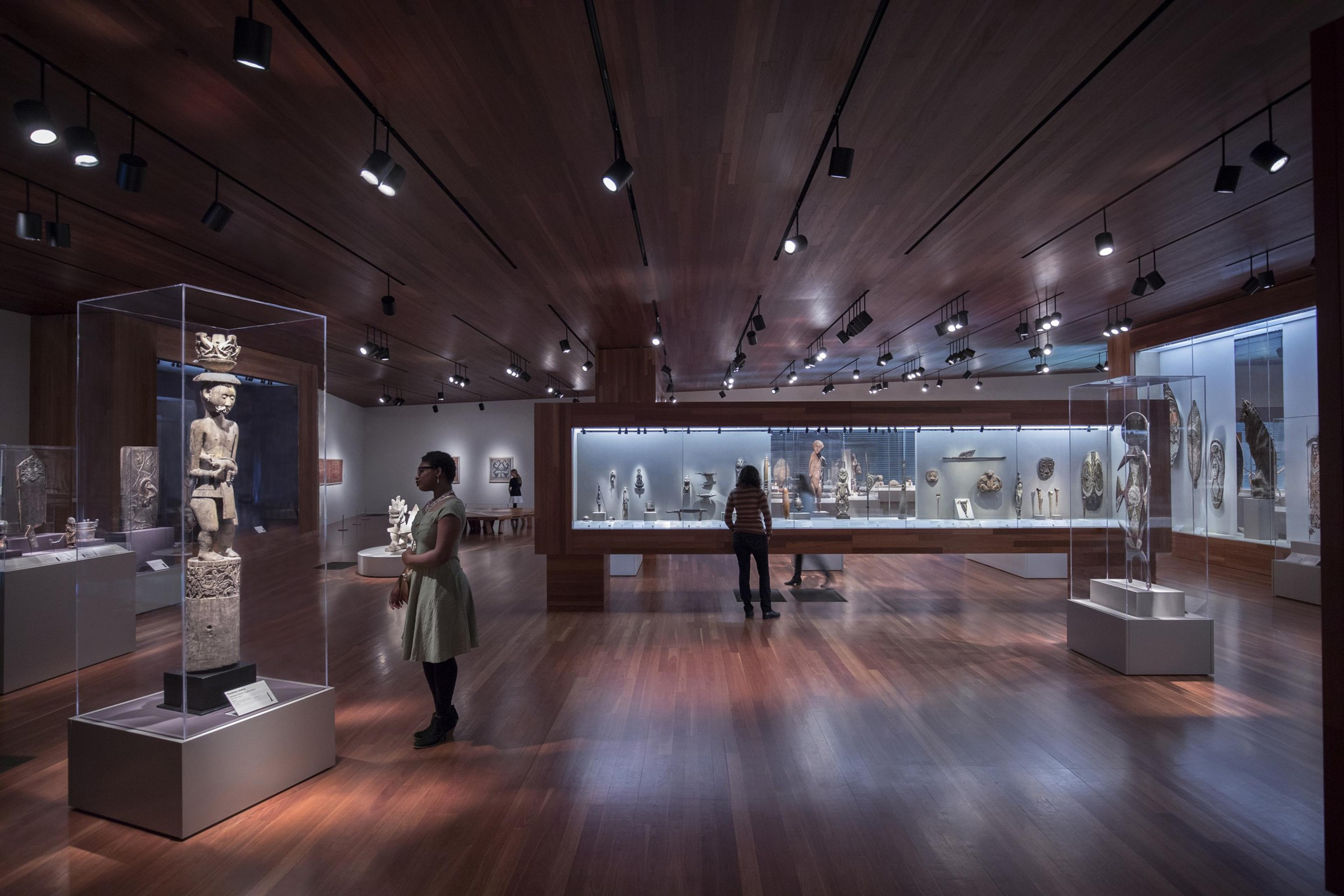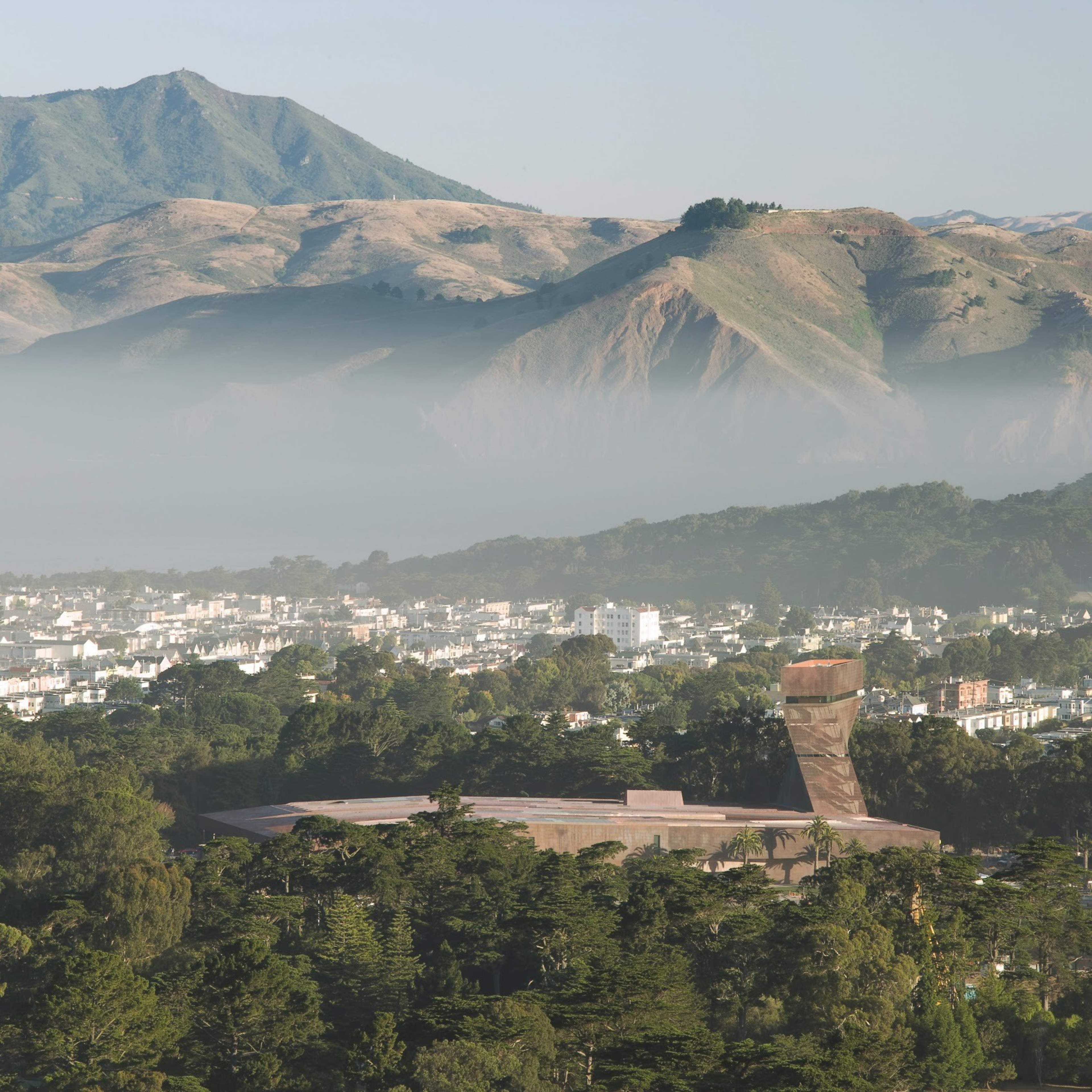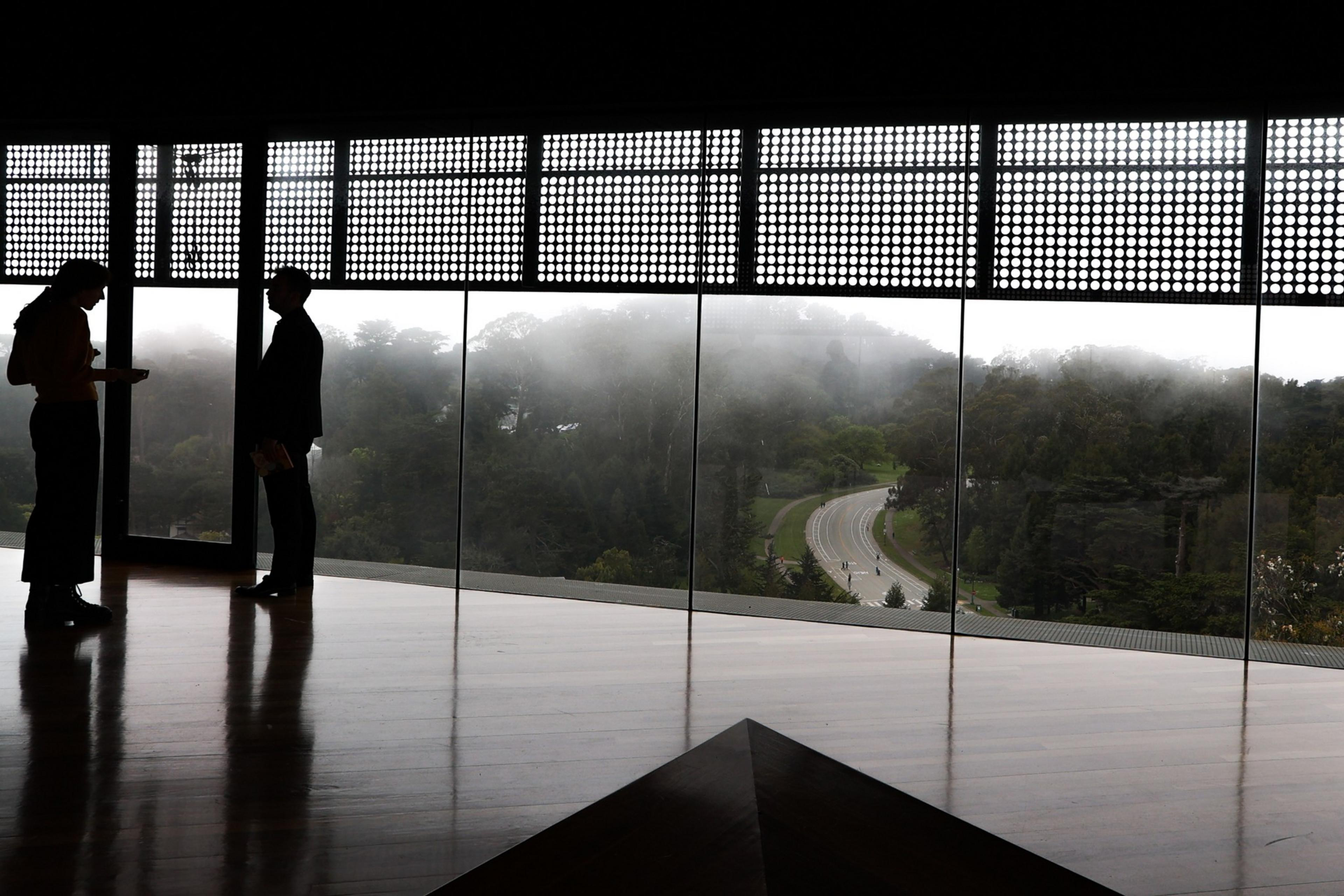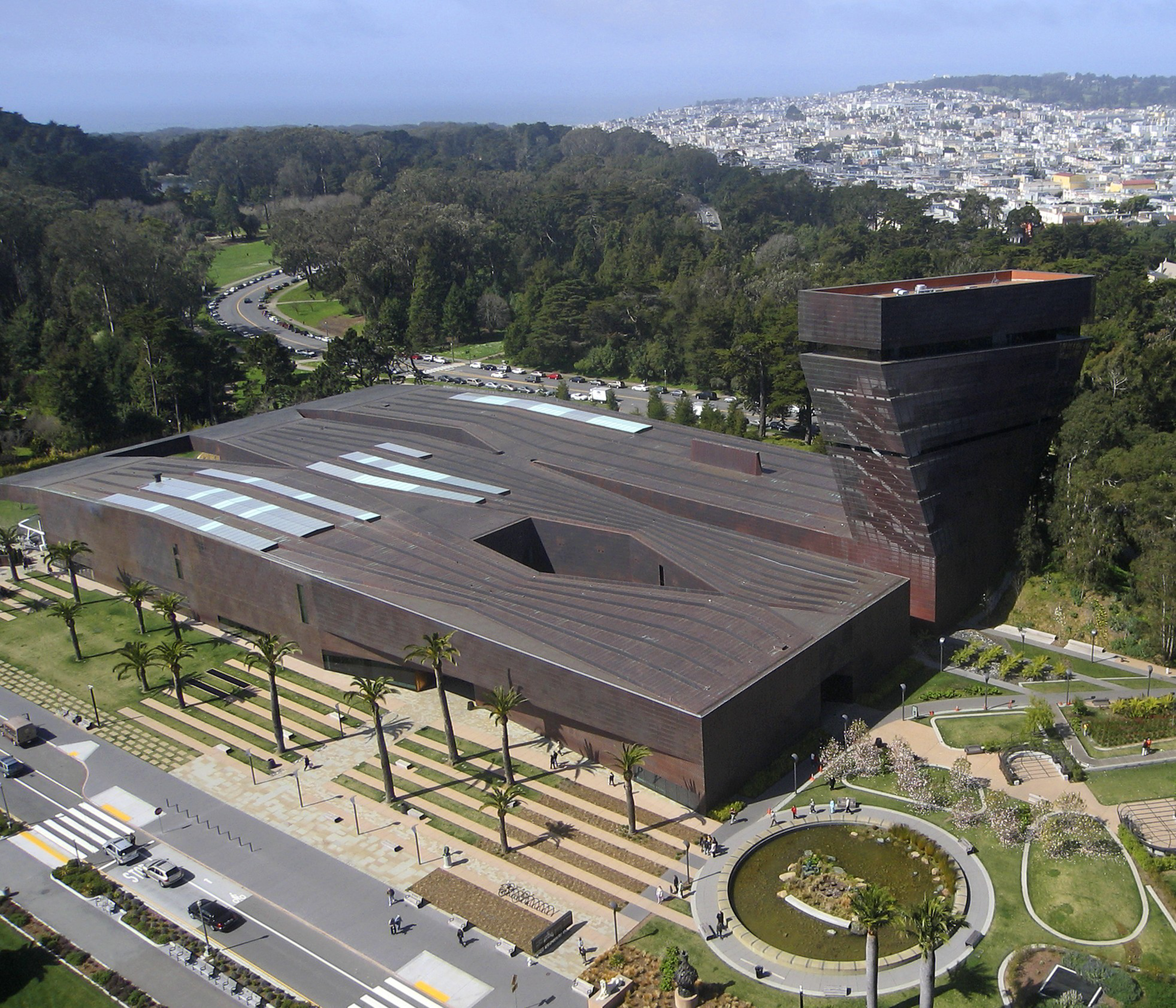Forty-eight human skulls. Twenty-six ribs. Twenty-one vertebrae. A collection of femurs, hands and feet, tibias, teeth.
These are just a selection of the more than 130 pieces of human remains that have been locked up inside the bowels of the de Young Museum, some for more than 100 years, The Standard has learned.
The Fine Arts Museums of San Francisco — which stewards the de Young Museum and the Legion of Honor — quietly published an explainer (opens in new tab) on its website earlier this week stating that it has been collaborating with Native American tribes to ensure the repatriation of the remains after the bones were “deaccessioned,” or officially removed from its inventory, in April.
Many of the remains belong to tribes from across the Bay Area and California, while others come from as far as Africa and New Zealand, belonging to Cameroonian and Maori tribes. Others have no known provenance and have floated anonymously from storage unit to archive cabinet for decades.

A spokesperson for the museum told The Standard that it does not have an estimated date when these remains will be repatriated. Until it figures out where to send the remains, they will continue to be stored in an undisclosed archive within the de Young Museum.
“This is a top priority and we are in the process of conducting outreach to Tribal groups and facilitating consultations regarding repatriation to the affiliated communities,” said Helena Nordstrom, a spokesperson for the Fine Arts Museums of San Francisco.
To expedite the repatriation process, FAMSF has hired Isabell Villasana, a curator specializing in repatriating Native artifacts, who will ensure that the museum complies with federal and state laws requiring the return of Native remains and artifacts.
According to public records acquired by The Standard, the 47 bones from the United States come from Marin and Contra Costa counties, as well as the Santa Catalina and San Clemente islands, and are dated between 1895 and 1914.
The California Native American Heritage Commission, the state’s oversight commission on the repatriation of Native remains, gave the Fine Arts Museums a list of more than 150 tribes statewide to consult on repatriation. It is unclear how many of the tribes the museum has contacted to date.

A dark past
Most of the remains were donated within the first two decades of the museum’s grand opening in 1895, while others were given by donors as recently as 1999. Those who gifted the remains range from notable San Francisco photographers and art curators to infamous phrenologists and amateur anthropologists.
John Gutmann, a Depression-era photojournalist in San Francisco, bequeathed a massive trove of his belongings (opens in new tab) to the de Young when he died in 1998 (opens in new tab). The collection included the skull of an Ekoi Tribe member circa 1900, native to what is now Cameroon. According to public records, the skull was wrapped in antelope skin and fibered with bast and rattan.
His generous bequest in 1999 to the Fine Arts Museums includes 150 of his vintage prints of Chinese, Indian, and Burmese subject matter, which were shown in 1947 at the M.H. de Young Memorial Museum,” reads information about Gutmann on the Fine Arts Museums’ website.

At the time that the skull was bequeathed to the museum, said Nordstrom, it was “classified as a cultural object and not an Ancestral human remain, a distinction we would not make today.”
Another donor of human remains was Dr. Joseph Simms, a leading 19th-century phrenologist who once wrote to Charles Darwin asking for a drawing of his foot and whose racist rhetoric (opens in new tab) was published in the Library of Congress. Simms gave the museum four human skulls from Australia and Maori Polynesians.
Museums and galleries across the country are currently in the midst of repatriating troves of Native remains after a federal law, known as the Native American Graves Protection and Repatriation Act, was tightened by the Biden administration earlier this year. The law provides an official process for museums and federal agencies to return Native American cultural artifacts, human remains and funerary objects to tribes. The American Museum of Natural History, for instance, just repatriated (opens in new tab) 124 of nearly 2,200 Native remains.

Like other museums of its day, the de Young was founded as a kind of quasi-encyclopedic institution that would exhibit a diverse array of cultures in tandem with art and natural science, albeit through an ethnocentric lens. Many of the donors who gave human remains to the museum were not notable art collectors but amateur archeologists.
The Oakland Museum of California, which was founded on a similar concept in 1969, holds the remains of 28 Native Americans, inherited from the Oakland Public Museum and two other collections. The University of California Berkeley holds at least 4,900 Native remains that it still hasn’t made available for return, the fourth-most of any institution in the country, according to a database compiled by ProPublica (opens in new tab). Updates to NAGPRA stipulate that, by January 2029, museums, universities and federal agencies must update their inventories of remains and funerary objects in consultation with tribes.

The Fine Arts Museums of San Francisco started the process of repatriation for its cache of remains before the pandemic, when it began contacting local tribes under the direction of NAGPRA.
“The curatorial staff stewarding the Fine Arts Museums’ Arts of the Americas collection are engaged in long-term dialogue and collaboration with communities of origin,” said Thomas P. Campbell, director and CEO of FAMSF in a statement. “Culturally sensitive repatriation of Ancestral human remains is a top priority and we are grateful to the Tribal representatives who engage with us in this work, enabling the return of Ancestors to their communities.”
This is not the first time the museum has let go of a large number of Native remains. In 1996, the museum repatriated 91 remains belonging to the Ohlone Tribe from Point Richmond, and the museum has continually repatriated funerary and cultural objects, according to the Federal Register (opens in new tab). In an email to The Standard on Thursday, Nordstrom said that more than a dozen remains are still out on loan to other museums that the museum is working to recall.
Besides human remains, other items in FAMSF’s collection are also subject to potential repatriation. The museum possesses four artworks looted from the Kingdom of Benin in what is now southern Nigeria. Two of these are Benin Bronzes (opens in new tab), which the museum removed from the Arts of Africa gallery in 2022. Looted by the British in 1897, more than 5,200 Benin artifacts live in museums across the globe and are a locus of one of the most contentious debates over repatriation in the world. Last month, the University of Iowa’s Stanley Museum of Art became the first institution in North America (opens in new tab) to return Benin Bronzes to Nigeria.

The unconsoled
While NAGPRA provides guidelines for repatriating remains to federally recognized tribes, those who aren’t federally recognized said the system is broken and provides little solace for them. Several non-federally recognized tribes say they have been excluded from FAMSF’s repatriation process, which is brokered by federal and state agencies.
Joe Sanchez is an elder of the Coast Miwok Tribal Council in Marin County, a non-federally recognized tribe in Marin that FAMSF has not consulted during repatriation.
When The Standard contacted Sanchez earlier this month, he was unaware of the 10 arm and leg bones belonging to the Coast Miwok people, gifted by a J. Henry Mohr, who, according to his granddaughter Carla Mohr Raffetto, was a sandblaster by trade.
“Wow,” Sanchez said in an email. “Makes me feel sad that these bones were handled in such a way and were most likely obtained from a shell mound which was obliterated in a totally disrespectful way.”
The Federated Indians of Graton Rancheria, a politically connected tribe in Sonoma that is federally recognized as the steward of the Coast Miwok Tribe, declined to comment on whether they had been in contact with FAMSF.
Twenty-nine remains in the de Young’s archives have no provenance whatsoever.
Correction: This article has been updated to reflect that a webpage with information on photographer John Gutmann was not deleted by the Fine Arts Museums of San Francisco.
